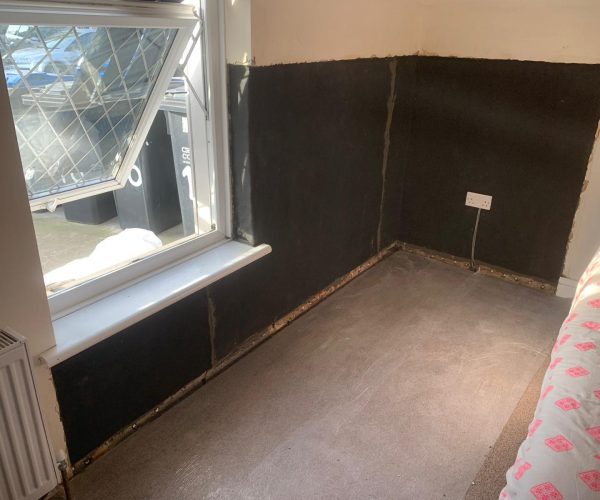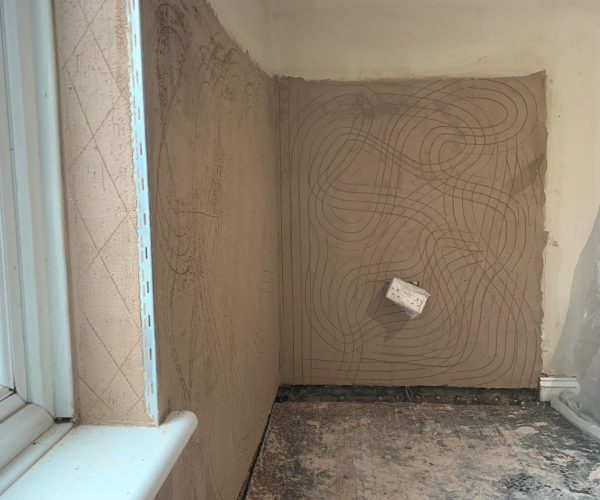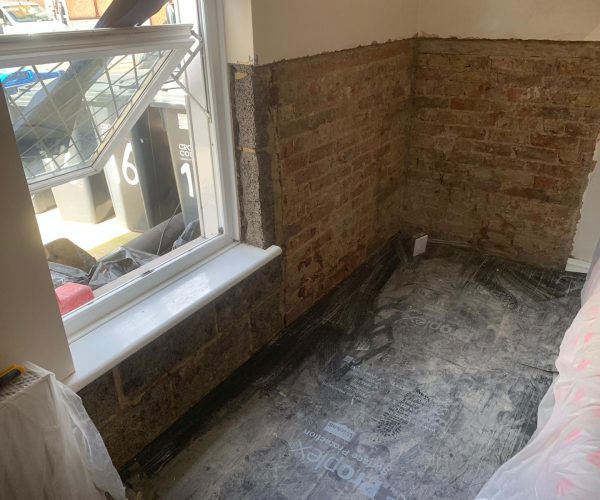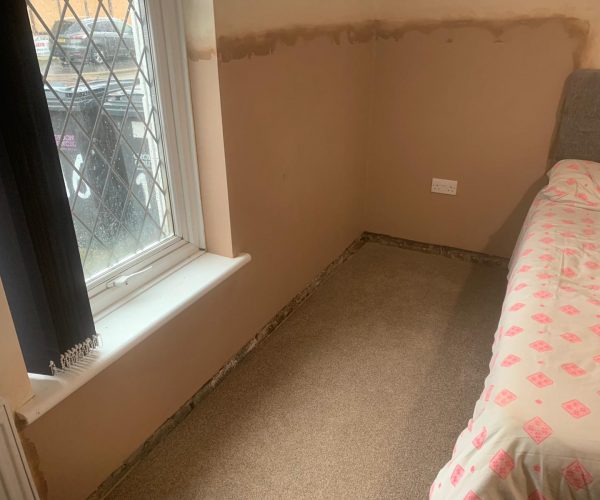Why Rising Damp Demands Expert Treatment
Here at SM Preservations, rising damp is one of our core specialisms. If moisture is creeping up through your walls from the ground, causing salt deposits, peeling plaster or damp patches low down, you need accurate diagnosis, skilled treatment and reliable guarantees. Serving Bromley, London & Kent, our Checkatrade-verified team delivers effective rising damp solutions backed by a 10-year guarantee.
What Is Rising Damp?
Rising damp occurs when groundwater climbs up porous materials like brick, mortar or plaster through capillary action. A failed, blocked or missing damp proof course (DPC) cannot stop this moisture, which leads to damage over time.
Unlike other damp types, rising damp requires a physical barrier in the wall—simply patching plaster or painting over won’t solve it. Our approach is to diagnose precisely, treat permanently, and restore beautifully.
Symptoms commonly associated with rising damp:
- Tide marks or damp up to about 1 metre above floor level
- Peeling paint or blotchy wallpaper at low levels
- White salt crystals (efflorescence) on plaster
- Crumbling plaster and dampness along skirting
- Persistent damp or musty smell
Why Choose Our Rising Damp Solutions

Accreditations & Insurance
Proud member of Checkatrade. Fully insured and compliant with UK building preservation standards.
Case Studies & Real-World Successes

Terraced House in Bromley
The external ground had been raised, bridging the original DPC. We re-established ground levels, installed a chemical damp proof course, and replastered using breathable materials. The homeowner saw no return of damp.

Kent Semi with Penetration Confusion
Initially suspected to be penetrating damp, but diagnostics revealed rising moisture. We treated correctly with injection and replastering. The project restored the wall’s dryness and eliminated salt damage.

London Period Property
Older bricks and multiple layers of plaster made diagnosis tricky. Through moisture mapping and salt testing, we located and treated rising damp, preserving the property’s historic fabric with sympathetic materials.
Our Rising Damp Treatment Process

Detailed Survey & Moisture Mapping
Use of hygrometers, moisture probes and salt testing, Inspection of external ground levels and building features

Diagnostic Report & Fixed Quotation
Full photographic evidence, moisture readings and recommendation, Clear scope, schedule and 10-year guarantee terms

Wall Preparation
Remove skirting, surface render, plaster up to ~1m height, Remove contaminated material and salts

Chemical Injection of Damp Proof Course (DPC)
Using specialist silane/siloxane cream into drilled holes along mortar bed, Each injection meticulously measured and applied

Replastering & Finishing
Use of breathable, salt-retardant plasters and finishes, Ensuring new plaster bonds correctly and performs well

Drying Period & Monitoring
Allow time for the wall to dry naturally, Periodic checks of moisture levels before closing up

Sign-off & Guarantee Issuance
Formal handover, moisture readings, guarantee certificate, Recommendations for homeowner maintenance
Contact Form

Get a Free Damp Survey
Don’t let damp damage your home. Book a no-obligation survey today to identify the cause and get a fixed-price solution.
FAQ's
No — similar symptoms can arise from penetrating damp or condensation. That’s why we always conduct tests and don’t rely on guesswork.
The holes are small and non-structural, executed cleanly and re-plastered to match. After drying, walls return to a good finish.
We recommend waiting until moisture readings are sufficiently low (often 4–6 weeks). We’ll advise on suitable breathable paints.
Yes — our 10-year guarantee protects you against recurrence under normal usage (subject to conditions in your certificate).
Absolutely — we isolate each section, protect your floors and furnishings, and keep disruption to a minimum.
If the cause is properly solved (ground levels, bridging, DPC), and maintenance is kept (gutters, external works), recurrence is extremely unlikely.

